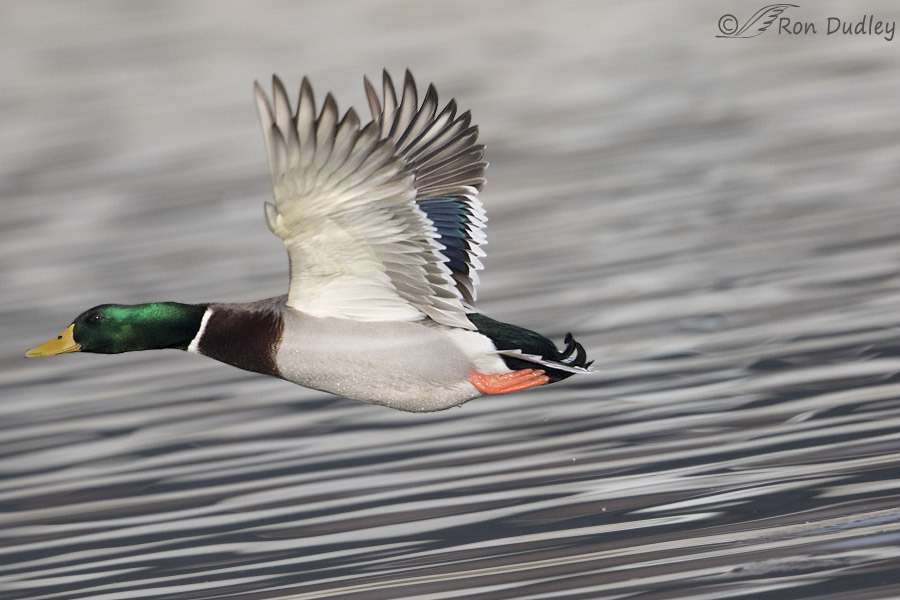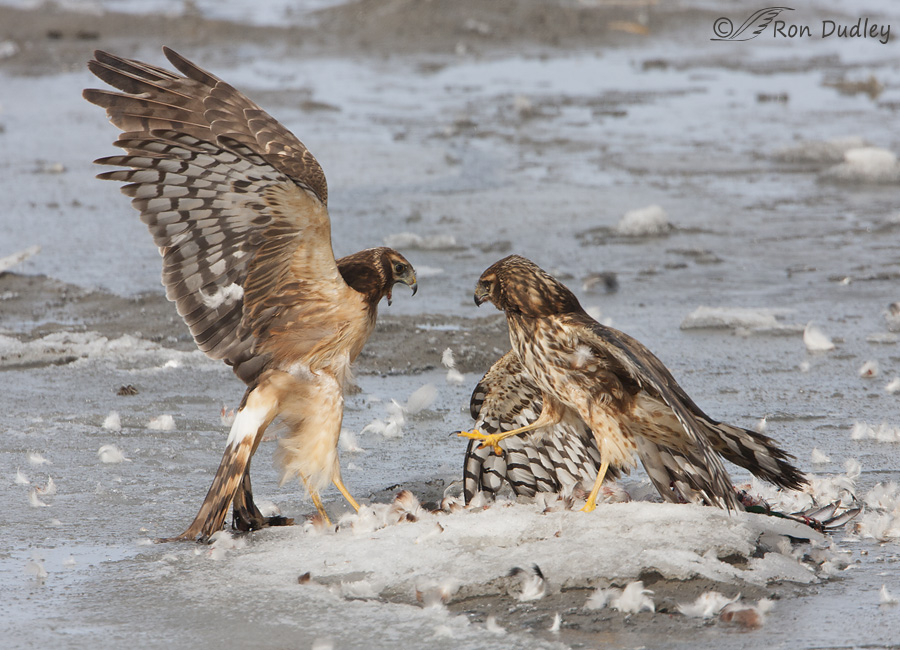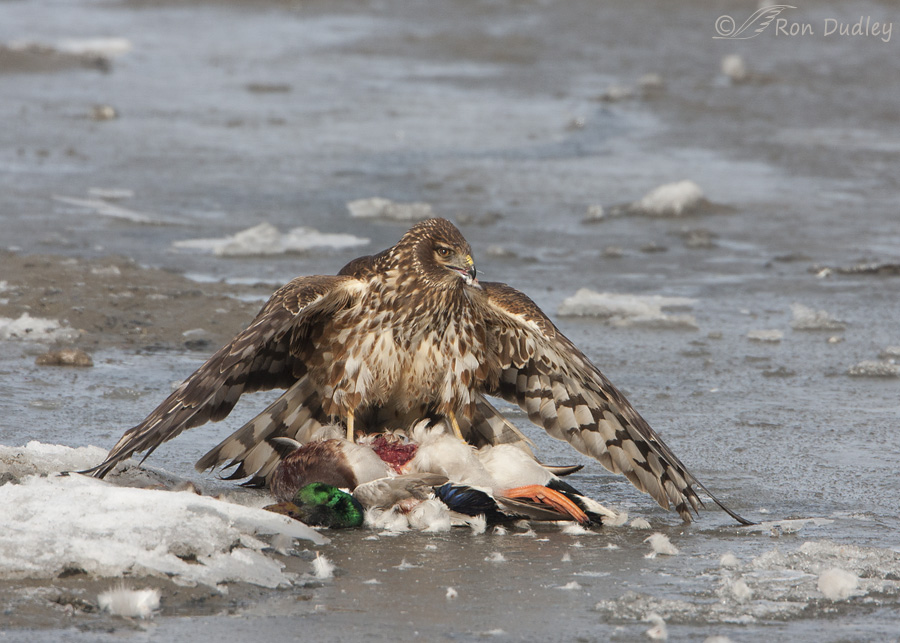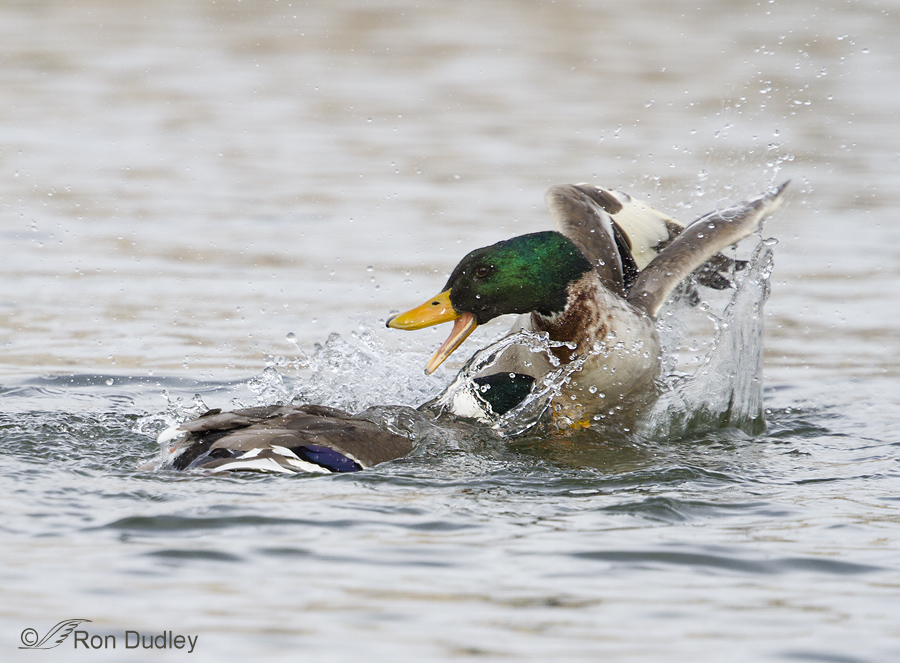Tag: mallard
Northern Harriers Not Seeing Eye To Eye
Northern Harriers – Why It’s Wise To Be Wary While You’re Eating
Mallards Mating And Fighting
Mallard Reflection
“Reflecting” my need to work with an image with some color for a change (after all of the snow, brutal cold and gray skies we’ve been having) and also inspired by some recent discussion with blog reader Sue Johnson regarding reflections, I’ve chosen to post something this morning that’s a little different for me. Last July I found this wild female Mallard posing and preening on a perch I liked and in warm, early morning light. 1/320, f/6.3, ISO 500, 500 f/4, 1.4 tc, natural light As I gained experience as a photographer I found myself gravitating away from reflections, often preferring instead the fine detail typically available in traditional portraits. But for my tastes, this image provides both – good detail and a strong reflection. I like the setting, pose, perch, light and reflection. In fact I like the reflection (bird and water colors) at least as much as I do the live bird. The image may be a little tight for some but it’s very close to full frame, shot vertically, and I just didn’t have as much wiggle room as I would have liked. I thought I’d present the image for your consideration anyway… Ron
Northern Harrier Defending Its Meal
Long ago I posted some images of Northern Harriers fighting over this Mallard but I have other shots of the fracas that I’ve never posted so I thought I’d share some of them today. 1/1250, f/8, ISO 400, 500 f/4, 1.4 tc For the moment this bird has sole control over the duck but it knows the situation to be tenuous at best. The wings-out pose and fierce look are fair warning to the other harriers in the vicinity (and there are lots of them) that any attempt to share in the feast will be met with resistance. 1/1250, f/8, ISO 400, 500 f/4, 1.4 tc These birds have been starving because of a brutally cold and snowy winter so this harrier begins a frenzy of feeding in an attempt to swallow as much food as possible before other birds move in. 1/1250, f/8, ISO 400, 500 f/4, 1.4 tc And it doesn’t take long before all hell breaks loose. At this point I often wasn’t getting enough depth of field for multiple birds so decided to risk f/10 and a slower shutter speed for the rest of the session. 1/800, f/10, ISO 400, 500 f/4, 1.4 tc I was lacking in both shutter speed and depth of field for this shot and I’m not happy with the shadow on the face but liked the talons on the back. 1/800, f/10, ISO 400, 500 f/4, 1.4 tc For a few moments both birds tolerated each other on the duck but that didn’t last long… …
Northern Harriers Battle over a Mallard
Occasionally we have brutally cold winters here in northern Utah. It’s my opinion that unusually cold temperatures when combined with thick crusted snow gives harriers little access to their staple food around here – voles. Survival then becomes tenuous for the harriers and they’re forced to move on to other food sources like small birds, dead carp and waterfowl. When a large meal like a carp or duck is available many harriers often fight over the food item and they do so with ferocity. During less stressful times of the year I often see these birds skirmish but then it almost seems like a playful interlude that they do simply for “fun”. Not so when it’s very cold and food is scarce – then it’s deadly serious and incredibly interesting to observe and photograph. First, a disclaimer. Some of the photos I’ll present here would wither under the scrutiny of critique because of cut off or clipped wings, missing eyes or heads, lack of catch lights and difficult and rapidly changing lighting conditions. My intent here is to show the behavior with the best images I have but some of them do have obvious flaws. The calm before the storm I didn’t see harriers make this Mallard kill but it was still fresh when I came across this bird on the duck. At first I though I’d simply be photographing the harrier calmly enjoying its meal but I was very mistaken. Thinking about challenging the larger bird for the meal It didn’t take long for other birds to challenge her for the Mallard. Some were timid…
Northern Harriers Fight to Survive Harsh Winters
Typically life is good for the hundreds of Northern Harriers who spend fall and winter in the marshes and prairies surrounding the Great Salt Lake after spending breeding season up north. Here their diet consists almost exclusively of microtine voles (small rodents resembling mice). These voles are incredibly abundant and relatively easy prey. It’s quite unusual to see a harrier even attempt to catch a songbird or anything else for that matter. Harrier hunting voles near the Great Salt Lake However the easy life takes a major turn for the worse during unusually harsh winters with intense cold and deep snow packs. During these times the voles spend most of their time underground eating roots and dried vegetation which means the primary source of food for harriers is suddenly unavailable just when they most need nourishment for warmth. And since most songbirds (their fall-back food source) have either migrated south or have already succumbed to the many American Kestrels in the region, simple survival for the harriers is suddenly very precarious. Now, out of desperation, harriers begin to go for larger prey – ducks and coots for example. Harrier on a duck kill frozen into the ice They aren’t able to take these prey often and when they do they can’t eat them quickly like they can a vole. The result is intense aggression – fighting fiercely over food. Typically I see very little true aggression(other than territorial squabbles) between harriers but all that changes when food becomes scarce. A relatively large prey item will provide multiple…





